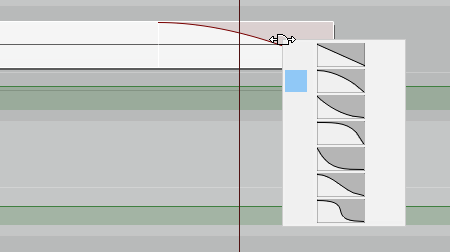A BI Software Company's Podcast Marketing Playbook
By Nicole Hitner
Last year, with a scant six months of content marketing experience under my belt and absolutely no background in radio or audio production, I recorded my company’s first-ever proprietary podcast episode. I wrote about why in part one of this series. Here, though, I’d like to focus on how we got started so that those of you interested in establishing your own business podcasts can have a template to work from. This playbook is by no means an exhaustive step-by-step but will nevertheless help guide your process.
Step 1: Design Your Episodes
An important, albeit obvious, first step. Think about your podcast’s intended audience, which may be your market or a subset thereof, as you determine what format you’d like your podcast to have, whether it will be serial or episodic, how long the episodes will be, what topics you envision covering, whether you’d like to include music or other non-vocal sound, who would make an ideal guest, whether or not episodes will be segmented into sections, what you want to call the podcast, etc.
I strongly encourage you to consider a format that accommodates guest speakers for the reasons outlined in part oneof this series, but don’t hesitate to try something less conventional, as it will make you stand out from the crowd! Once you have a plan, it’s time to execute.
Step 2: Schedule The Recording
For this step, I’m going to assume you have a guest. Making this experience as smooth and painless as possible for your guest is a major part of the scheduling process. Some best practices I’ve developed around this include:
- Send guests your interview questions well ahead of time. This gives them an opportunity to plan ahead and raise and issues they may have around your proposed discussion topics.
- Set expectations. Tell guests what the process will look like from start to finish. Tell them how long the recording session will be and what assets (e.g., headshot, biography) you will need for promotional purposes. If you want your guests to approve any copy/audio before publication, let them know to expect drafts.
- Offer tips for recording day. One or two days before the scheduled recording, email your guests a checklist they can use to get set up for the interview. Suggestions might include:
- Use headphones and a mic, preferably one positioned near your mouth.
- Record in a low-echo space with low ambient noise.
- Minimize distractions.
- Have notes and water handy.
Step 3: Conduct The Recording
This step can be tricky. Unless you have a recording booth and a way to get your guests to that booth, you will likely have to guide your guests through the process of recording their voices locally on their computers. It’s okay to use a web conferencing tool like GoToMeeting or similar as a backup, but do not rely solely on any cloud recording software for your podcast. Even if you have a hardwired connection to the network, you cannot ensure that your guests will too, and the last thing you want is a glorious track that cuts out at key moments or distorts your guests’ voices.
The best way to ensure that you get high-quality recordings is to have each podcast participant record their voices and send you the track for editing. I currently record using Cast, which automatically records your guests locally and uploads those recordings to the cloud, but I have encountered some glitches with that product. Before Cast, I simply had my guests download Audacity and hit the record button as we interviewed on a conference call. This proved a bit challenging for some less technical guests, but it worked. Whatever your method, ensure that you have local recordings and a backup just in case something goes wrong.
Step 4: Edit Your Recording
I used to use Audacity for this as well, but now I’ve transitioned to a full digital audio workstation (DAW) called Reaper. Whatever application you use, make sure it has a noise cancelling or reduction effect, as you will likely get tracks with white noise that needs to be cut out. EQ and compression effects are also nice to have, but noise reduction is a must. Having access to different fade curves has also been valuable, especially for transitions into and out of musical interludes.

I generally edit for succinctness and mistakes, removing flubs and redundancies. Editing is a skill that comes with practice, but the better you get at hosting your show, the less you may find yourself having to edit!
Step 5: Turn Your Recordings Into A Podcast
First, you’ll need somewhere to host your recordings. There are lots of platforms intended for that purpose (we use Soundcloud), and many of them have a freemium plan you can use to give them a test drive. Look for a service that will allow you to publish at your target frequency and also generate an RSS feed link for you. This will make it possible to distribute it to podcast browsing platforms like iTunes, Stitcher, TuneIn, and Spotify. Some of these platforms have strict artwork specifications, so make sure your logo meets those requirements at the outset.
Last but certainly not least, submit your feed link to a podcast statistics service. (Some hosting tools come with statistical tracking built in, but others don’t — we use Podtrac.) A stats service will serve as a central location for your podcast’s audience analytics: how many downloads you’re getting per episode, through which platforms, and by whom (gender and location often included). This is a crucial component of getting insight into your podcast’s performance, as some platforms don’t expose this data, and it’s nice to have it all aggregated on your behalf.
Now that your podcast is complete, it’s time to promote it through all your usual channels. Announce it on your company’s blog and share the announcement on social media. Devote a page on your site to the show so it has a designated home. Email blasts can be another great tool, but if you can manage to find other podcasts willing to promote or advertise your show on their show, that’s gold — especially if their audience overlaps with yours.
It’s generally a good idea to publish episodes consistently and announce any scheduled breaks in the episodes themselves so your subscribers don’t think you’ve folded and unsubscribe. Do what you can to solicit feedback from listeners as well, but as in all marketing initiatives, stay committed to what’s working for your company and giving you the best ROI. Who knows, podcasting could be the low-budget boost your content team has been looking for.
About The Author
Nicole Hitner is Content Strategist at Exago, Inc., producers of embedded business intelligence for software companies. She manages the company’s content marketing, writes for their blog, hosts their podcast Data Talks, and assists the product design team in continuing to enhance Exago BI. You can reach her at content@exagoinc.com.
